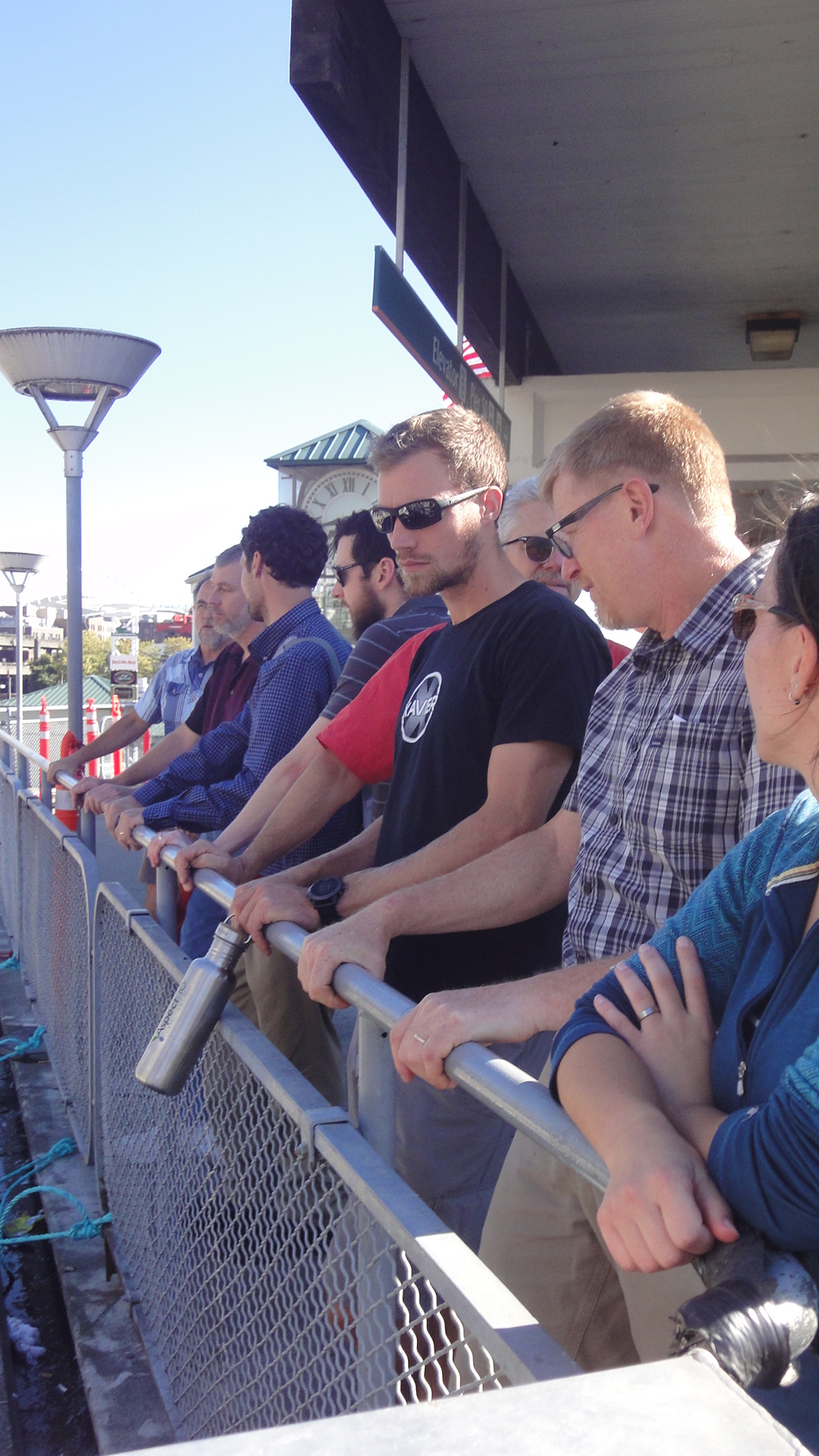One way Aspect encourages cross-pollination of ideas across the company is our monthly firm-wide “Technical Exchanges”. One part deep-dive into the technical challenges that face our clients and one part team-building opportunity, these meetings give us a chance to gather and talk shop with colleagues. September’s exchange was led by Principal Geotechnical Engineer Henry Haselton, who covered the history, design, and current status of the Seattle Seawall replacement project. Prior to his position at Aspect, Henry served as the deputy Project Manager during the planning and preliminary design stages of the Seawall from 2009 to 2013.
As the largest infrastructure project in Seattle’s history, this massive undertaking is striving to protect the “front porch” of Seattle. Henry’s presentation covered both the history of the original Seawall and the design and ongoing construction of the current one.
The original seawall was built between 1916 and 1934, mostly supported by wooden piles. This timber was all that stood between the waterfront and Puget Sound. As the years progressed, it was in increasing need of repair as sinkholes, tidal influences, waves, and marine foes like gribbles taking millions of tiny bites out of the wood took their toll. The 2001 Nisqually earthquake caused the adjacent Alaskan Way Viaduct to settle and increase pressure on the already stressed wall, thus spurring the City of Seattle to make seawall replacement a priority.
The new Seawall has a complex mix of pieces and players to coordinate: design and construction of a brand new earthquake-resistant seawall; navigating around a complicated lattice of preexisting in-water structures—including around 30,000 wood pilings—and utilities; enhancing marine habitat and environmental quality; and addressing public safety. They had to do this atop one of the busiest waterfronts in the country while managing and minimizing impact to tourism, businesses, roadways and bike/pedestrian passages—and taking into account concerns from a vocal roster of affected parties.
After Henry’s presentation, he took the Aspect crew on a walking tour to see the ongoing work. Here are a few of the project’s innovations we saw in action.
Jet grouting is currently happening between Marion Street and Yesler Way, including the section in front of the ferry terminal. Jet grouting can effectively improve ground around obstructions like utilities, sewer outfalls, and the some 30,000 piles that are still in place from previous waterfront structures.
Freeze walls minimize the groundwater entering the construction area by literally freezing the soil. They require a large amount of refrigeration—hence the frost that gathers around the pipes.
This corridor will one day be traveled by fish making their way through Elliott Bay. Young salmonids thrive in shallow waters with minimal light contrasts. The corridor will direct them into these friendlier waters separate from the deeper, darker Elliott Bay. Bumps and grooves on the inside wall are conducive to algae growth, so the fish can stop and snack during their trip. The small “speed bump” in the middle of the picture above accommodates the University Street Combined Sewer Outfall.
Closer to the Seattle Aquarium, the new seawall is in place and the sidewalks are already in use. These little windows in the waterfront promenade will allow sunlight to reach the young salmonids and other marine life in the fish corridor below.
Learn more about the project's background, current status, and next steps at Waterfront Seattle.





